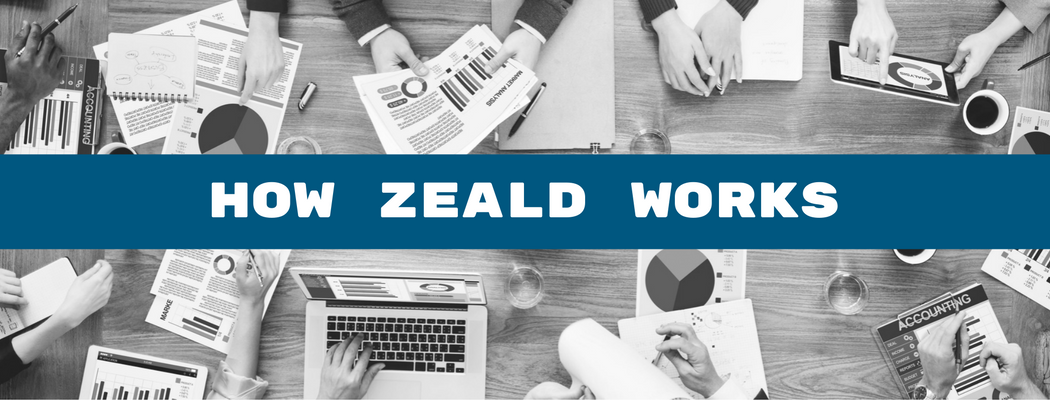How Zeald Works

Agile vs Waterfall
In any project, no matter the industry, there are a series of steps that have to be taken before arriving at a final outcome. These steps will all follow a certain methodology, whether that’s intentional or not. In the software industry, the most common two methodologies are agile and waterfall.
What is waterfall methodology?
Waterfall methodology is the traditional approach to software development and put simply, looks like this:As you can see, waterfall methodology follows a linear path from concept to product. Everything is planned out at the start, giving a clear schedule for the design and build phases. Upon completion, testing is done of the final product as a whole.
Advantages
- A good record of events is kept. Every time a major task is finished, it can be approved and noted down as ‘complete’.
- Client expectations are usually fulfilled. The plan is presented to the client beforehand, so everyone knows exactly what is going to happen.
- In case of employee turnover, there is minimal project impact. The linear methodology means new staff can pick up where old staff left off. Good recording of the project supports this also.
Disadvantages
- Poor overall quality. As the deadline looms, tasks left for later become rushed and quality suffers as a result. This also leaves less time for testing, meaning overall quality is compromised.
- Poor visibility. Tasks may take longer than expected, but you won’t know until you get to them. Clients may not be able to see a product until it is finished.
- Can’t handle change. Once one task is complete, staff will move on to the next piece. Changing a previous part of the project will result in major delays, as it will affect each subsequent piece.
- Waterfall methodology is risky. Testing after the project is completed is asking for trouble. If a bug is found in a task that was completed early, it could have ramifications for each piece of the project down the line.
Appropriate for:
- When both parties are in agreement and have a clear picture of what the final product should look like.
- When clients are unable to make changes to the project as it is developed.
- When clearly defined processes and products are the final goal, rather than getting the project finished quickly.
What is agile methodology?
Agile methodology is the modern approach to software development and put simply, looks like this:With agile methodology, we divide the project into smaller chunks and test at the end of each phase. There can be multiple phases in progress at the same time.
Advantages
- Overall quality is improved. Each task is tested whenever possible. This ensures everything works correctly.
- Visibility is improved. Clients can see the product evolve as a whole, as each task develops.
- Easier to adapt to change. Due to increased visibility, everyone involved can see potential mistakes, and request changes while the task is being worked on.
- Easy to add features. If a new product is requested, work can begin on it straight away in conjunction with other aspects of the project.
- Fewer bugs. Constant testing means bugs are fixed as you go.
- Usually runs to schedule. Because the products are tested so thoroughly with agile, the product could be launched at the end of any cycle. As a result, it’s more likely to reach its launch date.
Disadvantages
- Needs reliable staff. With a bad project manager, the project can become delayed or run over budget.
- Final product may differ from original plan. Due to the agile methodology, the finished product may look different to the original plan. The upside is that this is usually made clear during development.
Appropriate for:
- When speed of delivery is a priority.
- When clients are able to make changes on the fly.
- When you have many skilled staff that can all work independently and adapt to new situations.
- When the industry is prone to rapid change.
Why does Zeald use agile ?
Zeald uses agile methodology as it has become standard for the industry. We believe the benefits outlined above are extremely valuable and outweigh the benefits of waterfall methodology. Building a website is not like building a house, you don’t have to wait for the foundations to be built before tackling the interior. An agile approach means we can start working on all digital aspects of your business at the same time. Our digital marketing experts can begin keyword research for search engine optimisation at the same time as our developers put together your online store and our designers create the website layout.Agile methodology helps us to give you greater clarity on the project as it develops. This means greater flexibility and maneuverability around a project that is constantly evolving, like a website for your business. If you think your online efforts could be assisted by Zeald's agile approach, please request a free website audit.


Comments